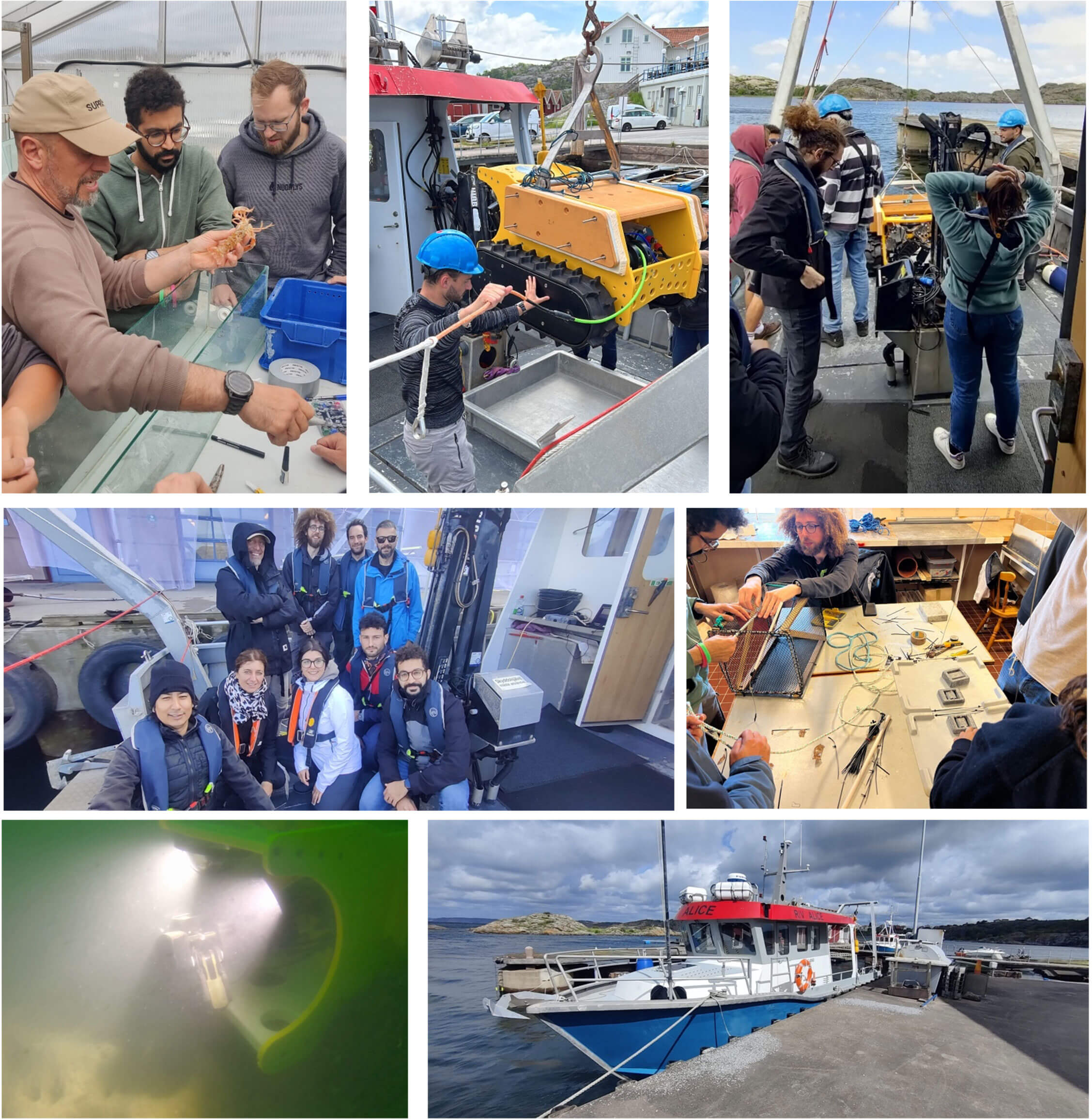REDRESS - DIGI4ECO
2024 Summerschool on marine restoration and digital twin
June 10 – 17
Prof Laurenz Thomsen (University of Gothenburg) coordinated the first Summerschool of the EU REDRESS Project hosted at the Kristineberg Center for Marine Research and Innovation facility (Fiskebäckskil, Sweden).
The event focused on the WP2 – Task 2.3 Restoration of soft bottom habitats and WP3 Innovative and cost-efficient technologies to monitor deep-sea restoration efforts. The aims of REDRESS-WP3 are partially shared with the other European project DIGI4ECO that was involved in the event to stress on the importance of interdisciplinary approaches for restoration, particularly in the deep sea.
The main objectives were: i) increasing the knowledge on the importance of restoration in relation to the current socio-ecological implications and ii) improving skills on planning restoration interventions, the related monitoring and the evaluation of the restoration success.
To achieve these objectives, the activities were organized to reach different targets, starting from how to plan restoration and monitoring, using platforms and cabled observatories from which imaging data can be analysed and integrated with larger spatial scale data from more classical approaches such as ROVs. Moreover, different ecological indicators for the evaluation of restoration success were also investigated.
Magnitude of the event
Around 40 people participated to the Summerschool, including students and teachers both in presence and online. Teachers from different disciplines were available to daily share their knowledge and current work within the panorama of restoration and ecological monitoring, making the experience as much inclusive, complementary and enriching as possible for the different experience of the students (ecology, marine biology, oceanography, geology, engineering and informatics).
List of activities
- Transplanting: study of the donor site and identification of a suitable receiving site with vessel, ROVs and crawler
- Water and sediment sampling: CTD profiles and box corers
- Recovery of sediment and organisms from the donor site
- Setting-up of an aquaria system for organisms’ storage
- Flume experiment focused on the study of recovered organisms’ behavior
- Tagging of the organisms
- Plan for the release system and strategy
- Release of organisms in the selected receiving site


